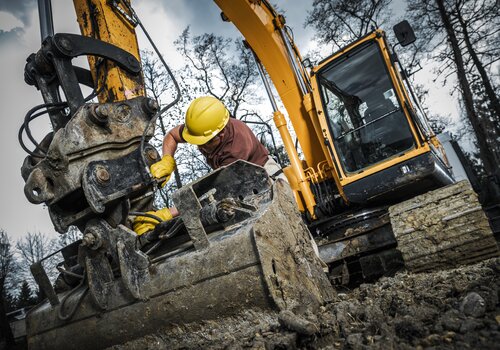Equipment rental pricing has been relatively stable, but tariffs, supply chain issues and overall economic uncertainty can change that on a dime.
Construction equipment rental prices for contractors have been virtually unchanged since the end of 2023, according to Producer Price Index data from the U.S. Bureau of Labor Statistics, and have risen only modestly over the past five years, says Zack Fritz, economist for the Associated Builders and Contractors.
Since the start of 2020, equipment rental prices are up just 12 percent – significantly slower than the 41 percent increase in overall construction input prices over that span, Fritz says.
But what about the impact of tariffs on rental companies’ purchases of new equipment or parts – how will that impact rental prices for contractors?
Rising Equipment Costs and Tariff Uncertainty
Over the past five years, the cost of purchasing new equipment has surged dramatically. “We've seen significant price increases for purchasing equipment going back to the pandemic through probably about a year ago, anywhere from around 25 percent to 50 percent,” said John Jeanguenat, vice president of the equipment segment at the American Rental Association (ARA). While prices have stabilized somewhat, they remain elevated, and new factors are threatening to push them higher.
One of the most pressing concerns is the potential impact of tariffs. “It’s expected that prices for new equipment and parts are going to increase if tariffs are in place, depending on where the equipment is being sourced,” Jeanguenat explained. With rental companies sourcing from countries like China, Mexico, and Canada, any changes in trade policy could have ripple effects across the industry.
Tom Doyle, ARA’s vice president of association program development, echoed this concern, noting, “The overall volatility that could happen right now with some of these policy changes around tariffs is the issue. We think short-term it will create a price increase, but we don't know how much yet because it changes pretty often.”
Supply Chain Shifts and Strategic Fleet Management
The pandemic-era supply chain disruptions forced rental companies to rethink their procurement strategies. “Rental companies have to be extremely strategic about their new equipment purchases and used equipment purchases to refresh their fleets in a way that maximizes their spend,” Jeanguenat said. In some cases, this has meant aging fleets longer than usual to stretch budgets.
Doyle added that larger rental companies have more flexibility. “They've got a pretty good capacity of both existing equipment and new equipment, so they can age that. The big benefit to the rental companies is that generates a lot of cash flow,” he said. This financial flexibility allows them to weather short-term cost increases while planning for long-term growth.
From a rental rate standpoint, 2025 versus last year, we're not seeing or hearing of any significant changes to rental rates.
John Jeanguenat
Vice President, Equipment Segment, American Rental Association (ARA)
Rental Rates: Holding Steady for Now
Despite the rising costs of equipment and parts, rental rates have remained relatively flat. “From a rental rate standpoint, 2025 versus last year, we're not seeing or hearing of any significant changes to rental rates,” Jeanguenat noted. “They're mostly flat, maybe a one to two percent increase.” This stagnation is largely due to competitive pressures and local market dynamics.
Doyle pointed out that while input costs like labor and materials surged during the pandemic, some relief may be on the horizon. “Now maybe these falling interest rates could potentially be some relief,” he said, suggesting that easing financial conditions might help stabilize costs.
Looking Ahead: Volatility and Opportunity
Both experts agree that uncertainty will continue to define the equipment rental landscape in 2025. “There is a lot of uncertainty in the market for rental rates and even equipment pricing,” Jeanguenat said. “There's probably a lot more volatility this year than in recent years.”
To help rental companies navigate these challenges, the ARA is closely monitoring trends through its Rentalytics program. “We’re sharing the best information that we can with ARA members, so that they can make the best decisions possible for their businesses,” Jeanguenat emphasized.
As the industry adapts to these evolving conditions, contractors and construction firms will need to stay informed and agile. Equipment rental trends may not just reflect broader economic shifts—they may also be a key lever in controlling construction costs in the years ahead.
Stay ahead of the curve with the latest equipment rental trends and their impact on construction costs. Dive into our articles for more insights and updates. Share this article with your team and spark a conversation about the future of construction cost management. Let's navigate these challenges together!
Photo credit: SHUTTERSTOCK.COM/ANOTHER77












